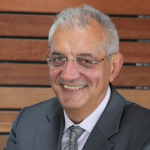WEBINAR – Prof. Nikolaos Hatziargyriou, NTUA. Nov. 20
| November 26, 2024 | Posted by Koji Yamashita under PES |
Comments off
|
Distinguished speaker, Professor Nikolaos Hatziargyriou, delivers a compelling study on the challenges of frequency dynamics in modern power systems due to reduced inertia from power electronics-based generation. Highlighting the critical role of storage in isolated systems, he introduces a data-driven approach using optimal classification trees for dynamic security and optimal renewable integration. Validated through dynamic simulations on Rhodes Island, his presentation also unveils a digital twin for realistic testing, bridging AI solutions and practical system operations.

Distinguished Speaker: Professor Nikolaos Hatziargyriou[Bio]
Professor Nikolaos Hatziargyriou is a professor in Power Systems at NTUA since 1995, holds a Diploma in Electrical and Mechanical Engineering (NTUA, 1976) and MSc/PhD degrees from UMIST (1979, 1982). He has served as Chairman and CEO of Hellenic DEDDIE since 2015 and was Deputy CEO of Greece’s PPC (2007–2012). A Fellow of IEEE, past CIGRE SC C6 Chair, and co-chair of the EU Smart Networks Platform, he has led over 60 R&D projects, including “Microgrids.” He has published extensively, authored Microgrids: Architectures and Control, and was listed among the top 1% most-cited researchers in 2016.
Data-Driven Frequency Dynamic Unit Commitment for Island Systems with High RES Penetration[Webinar Video]:
Abstract: The replacement of directly connected synchronous generators with power electronics interfaced generation has led to a decrease in system’s inertia posing a significant challenge on frequency dynamics. In isolated systems with reduced inertia the role of storage becomes crucial. Indicative abstracts from the CIGRE WG C6.43 and results from studies in island systems will be overviewed. Moreover, predefined limits for renewable penetration and primary reserves are frequently set for dynamic security purposes. This approach might not ensure dynamic security or can prove conservative in certain conditions. Furthermore, these approaches rarely consider the capabilities of inverter based renewable generation to provide frequency services. In this presentation, a data driven approach, based on optimal classification trees is described to extract, from a detailed dynamic model of the system, the constraints for a frequency dynamic unit commitment formulation. Hence, both dynamic security and optimal exploitation of renewable and conventional units for power production and frequency support can be achieved. The advantages of the proposed method compared to conventional and state of the art approaches in frequency security are validated through dynamic simulations on a realistic model of Rhodes island. Its economic performance, computational overhead and modelling complexity is compared to alternative approaches.
Despite the benefits however, system operators may be reluctant to embrace AI solutions, as the models may be challenging to interpret, perceived as black boxes. Additional concerns may arise regarding the adequacy of testing under realistic conditions. In the presentation these concerns are addressed by introducing a digital twin designed for the realistic testing of dynamic security assessment applications in the system of Rhodes. The developed digital twin incorporates two options for the virtual model of the island: an interface with a commercial RMS/EMT software and a real time simulator together with an industrial under frequency load shedding protection equipment. The settings of the actual field devices on the island are tested through a hardware in the loop interface.